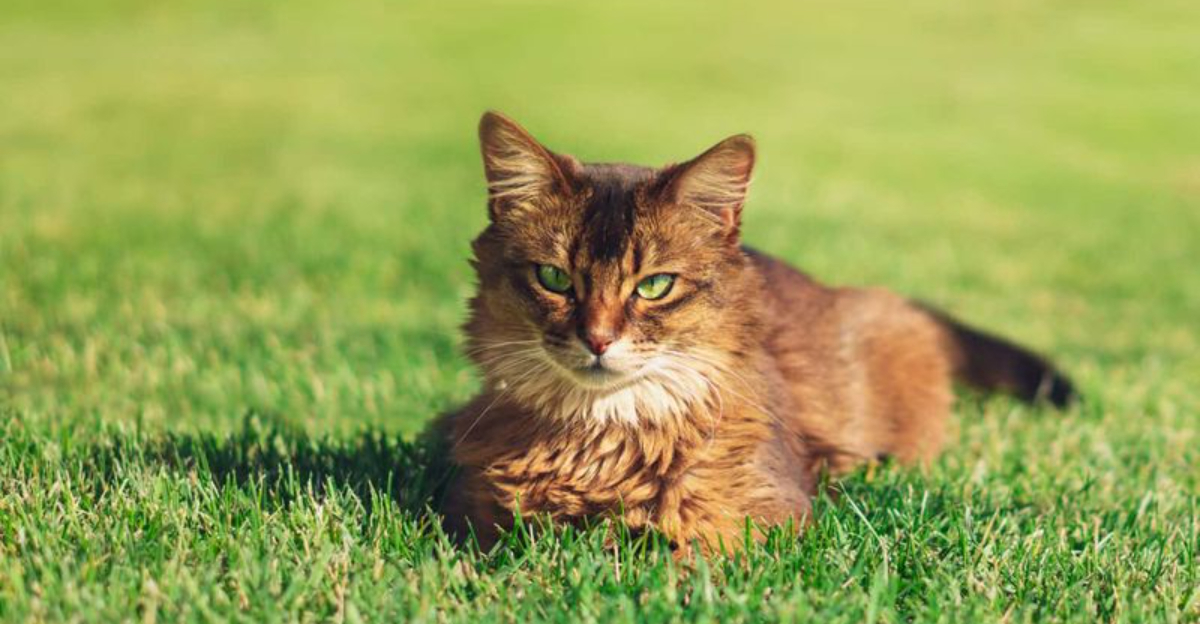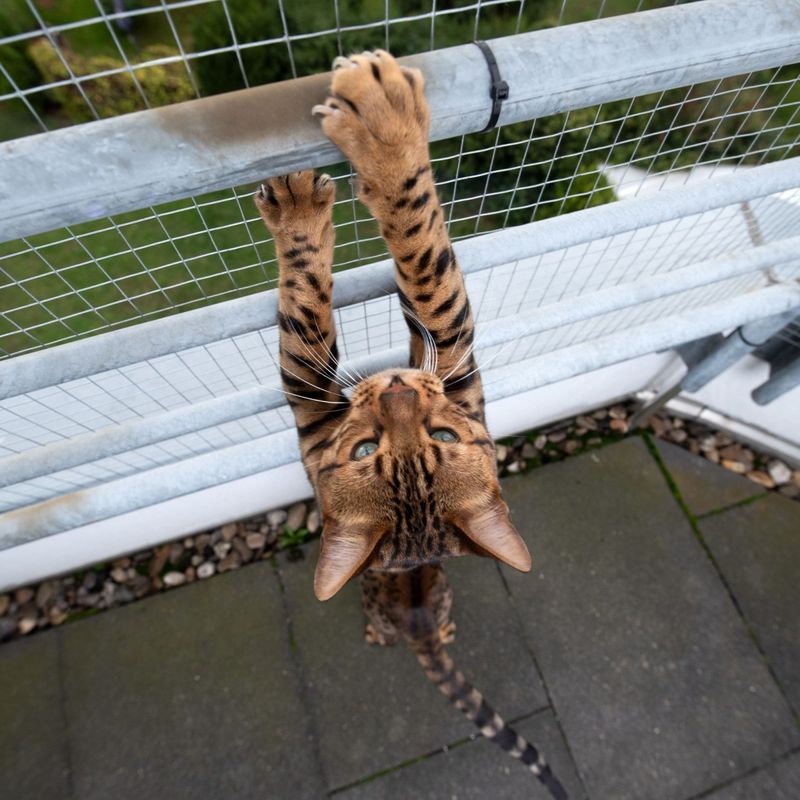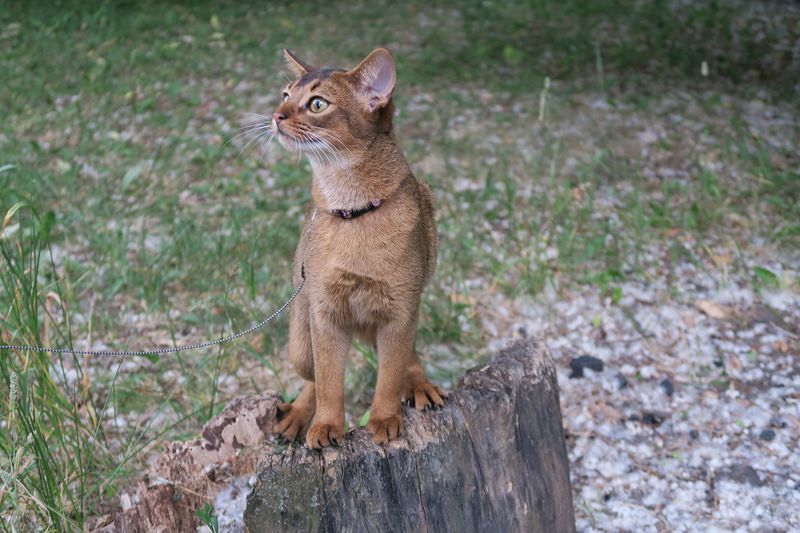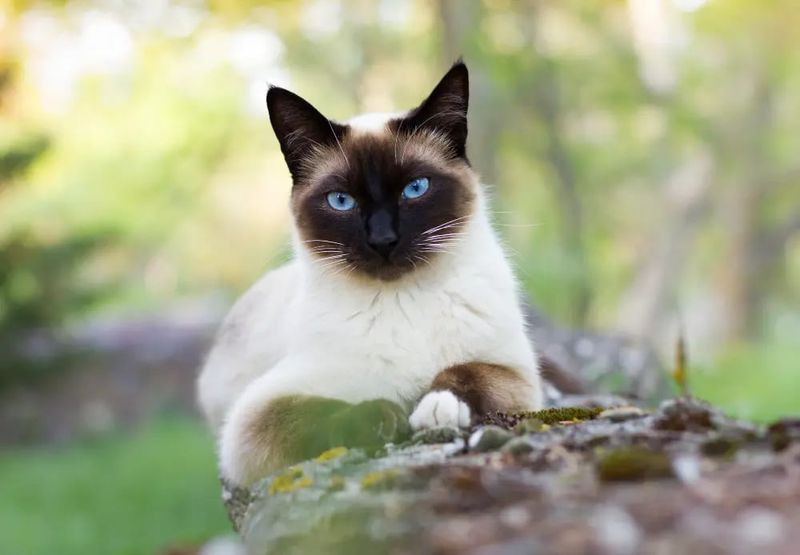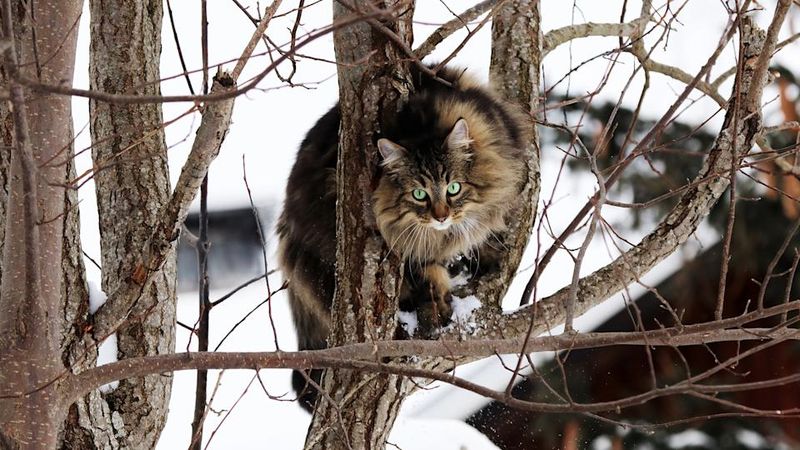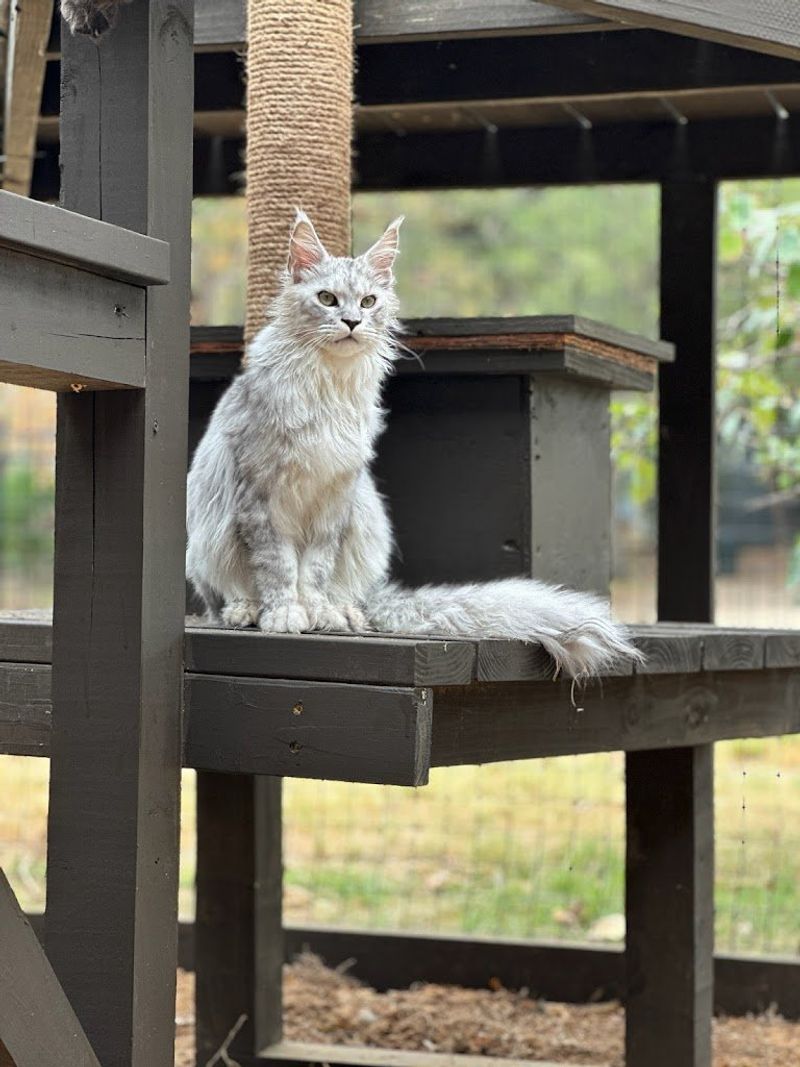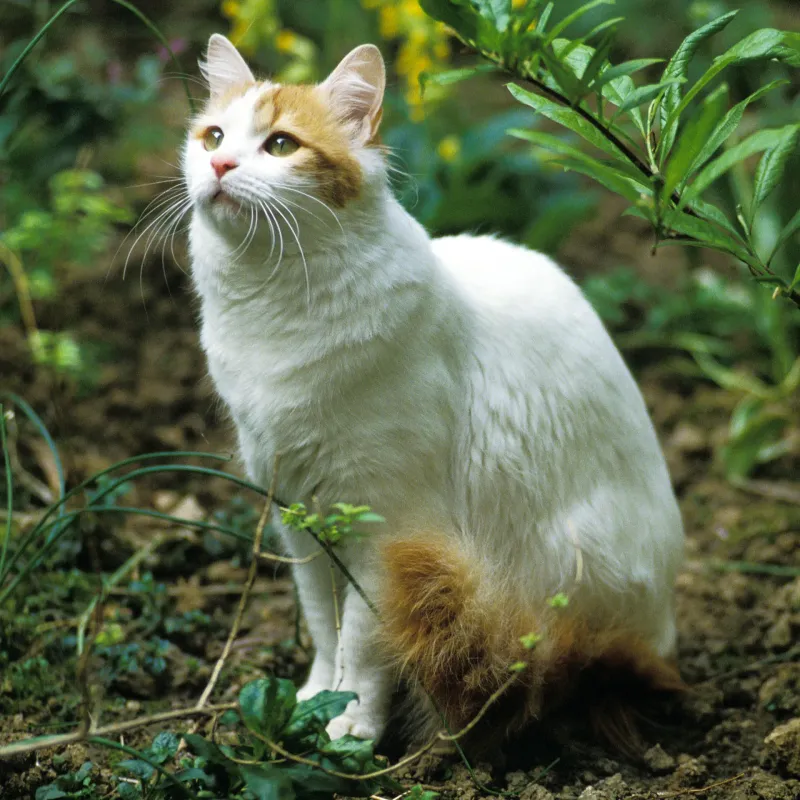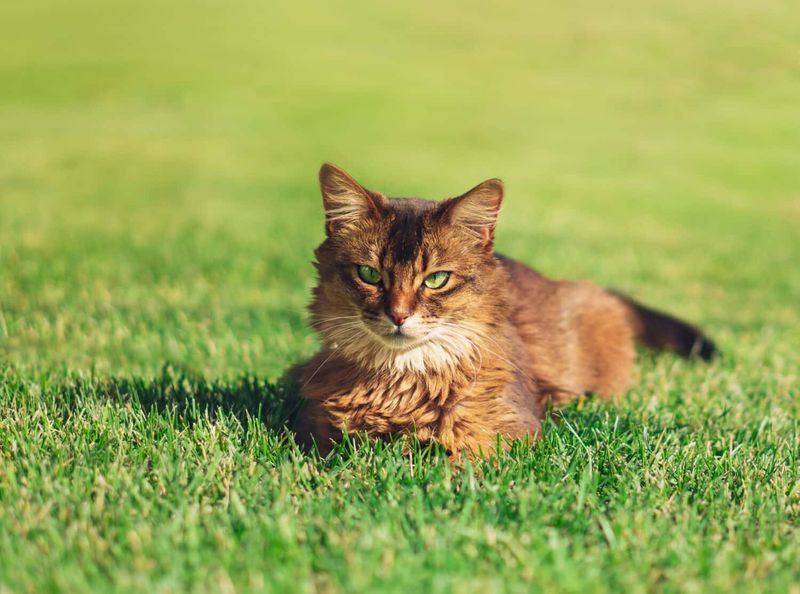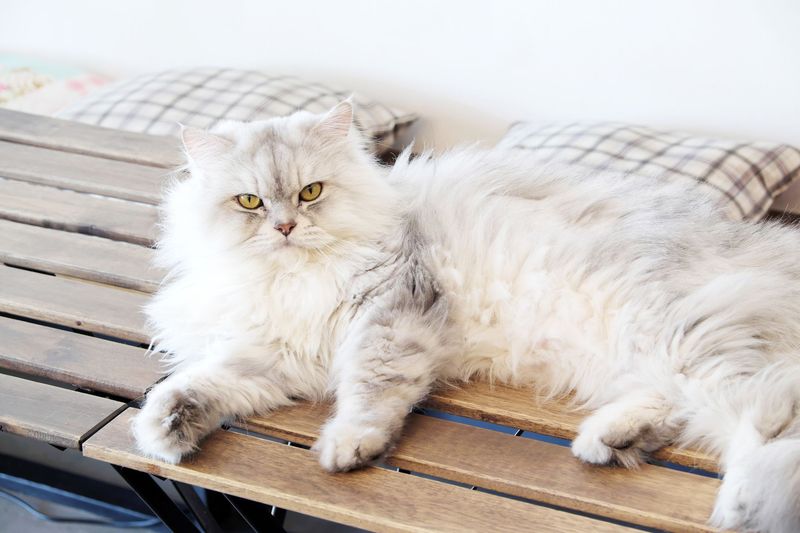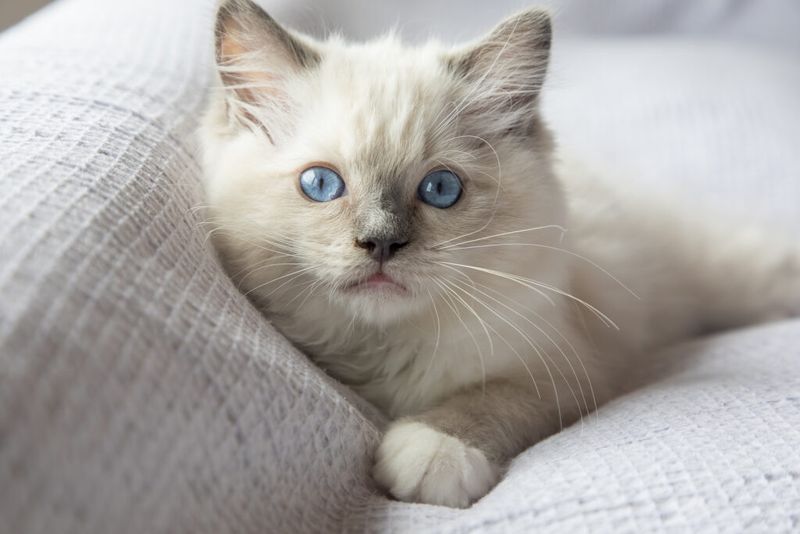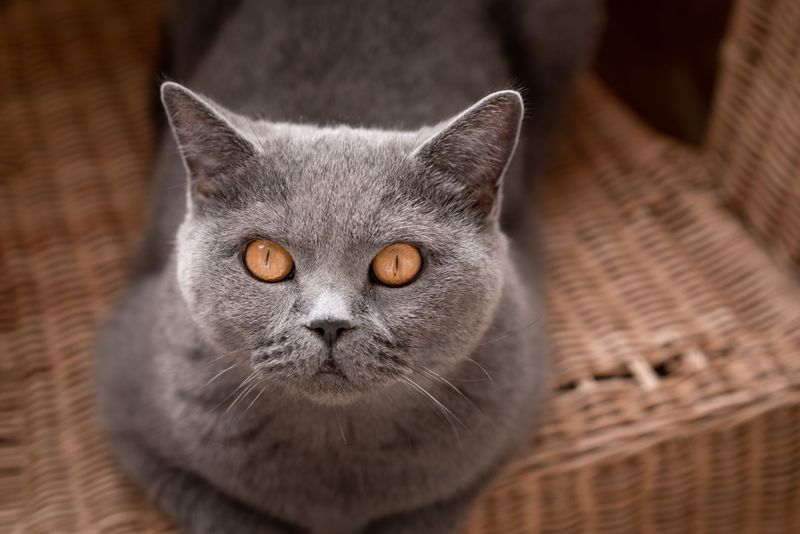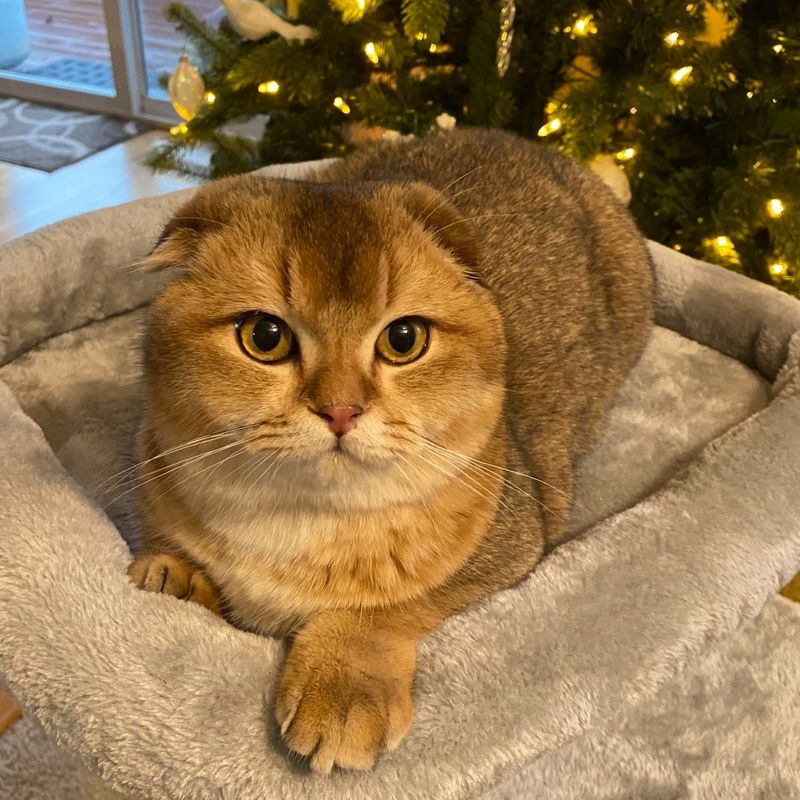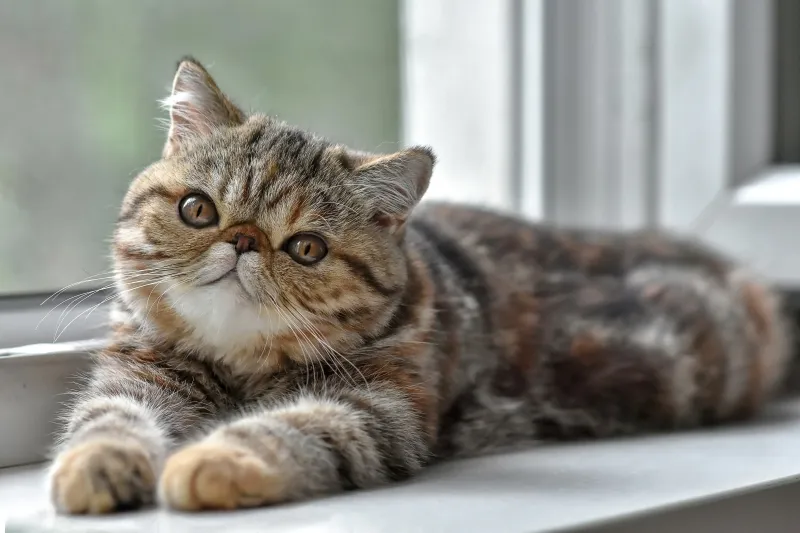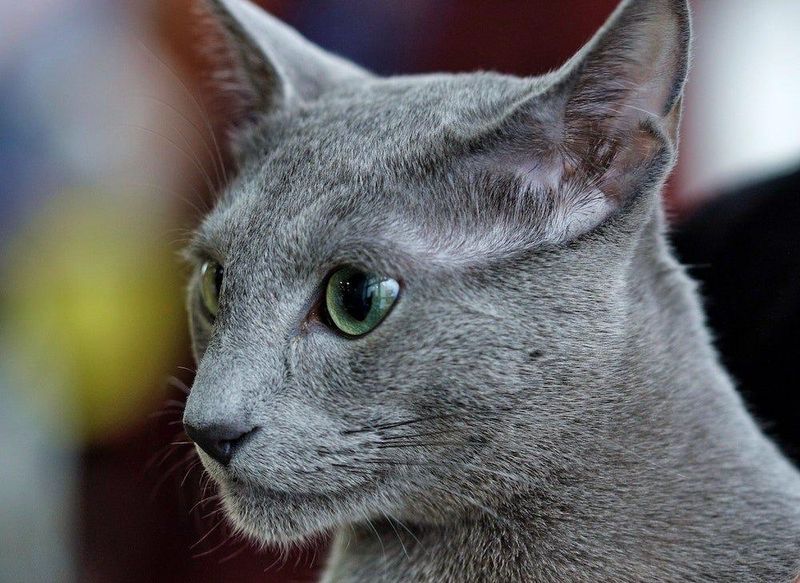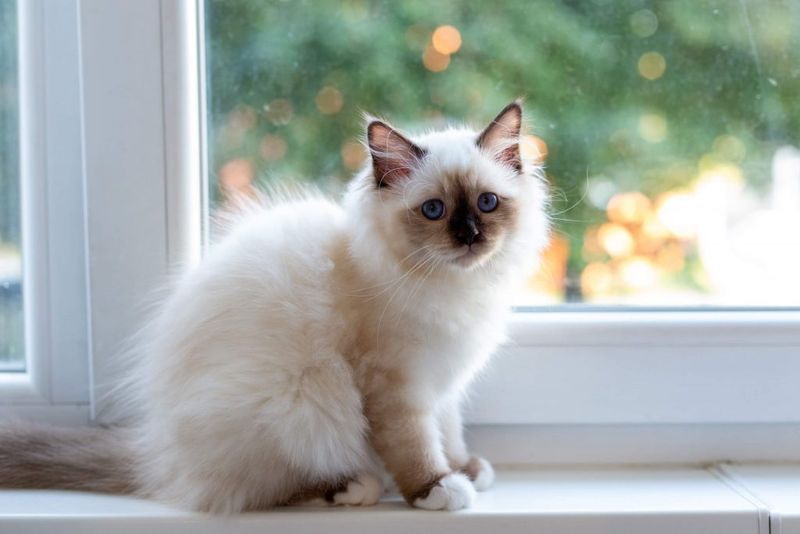📖 Table of Content:
Cats display a wide range of personalities, each with its own unique traits and behaviors. Some cats are natural explorers, drawn to the outdoors and eager to roam whenever the opportunity arises. Others find comfort in familiar surroundings, preferring the safety and coziness of home.
Understanding these differences is essential for providing the right environment that suits a cat’s instincts and needs. Adventurous breeds may require extra security measures to prevent escapes, while indoor-loving cats thrive in calm, controlled spaces. Recognizing a cat’s natural tendencies helps avoid stress for both pet and owner.
Creating a living space that matches a cat’s personality contributes to their overall happiness and well-being. It also brings peace of mind to those who care for them. Tailoring the home environment to fit these traits can strengthen the bond between the cat and the household.
1. Bengal
Wild at heart, Bengals carry the DNA of their Asian Leopard Cat ancestors, making them natural escape artists. Their athletic build and incredible jumping ability mean no fence is too high when adventure calls.
These spotted beauties crave stimulation and will bolt through any opening to satisfy their hunting instincts. Owners often find themselves chasing their Bengal through neighborhoods, as these cats can cover impressive distances in their quest for excitement.
Their intelligence works against containment efforts, as they quickly learn to open doors, windows, and even simple latches.
2. Abyssinian
Curiosity defines every Abyssinian, and these cats treat the world as their personal playground. Their restless energy and fearless attitude make them prime candidates for outdoor adventures, whether you approve or not.
Originally from Ethiopia, these cats retain strong survival instincts that drive them to explore beyond home boundaries. They’re natural climbers who view trees as highways to freedom and rooftops as observation decks.
Many Abyssinian owners install cat-proof fencing after learning the hard way that these determined felines can disappear for days while following their wanderlust.
3. Siamese
Vocal and demanding, Siamese cats often express their desire for outdoor exploration through persistent meowing and door-scratching behavior. Their social nature drives them to seek new experiences and interactions beyond the home.
These intelligent cats quickly learn daily routines and will wait by doors during peak activity times, ready to make their escape. Their slender build allows them to slip through surprisingly small openings.
Many Siamese develop wandering habits after just one successful outdoor adventure, as they’re quick learners who remember every route to freedom they’ve discovered.
4. Norwegian Forest Cat
Built for the wilderness, Norwegian Forest Cats possess incredible climbing skills and weather-resistant coats that make outdoor living seem natural. Their large size and sturdy build help them navigate challenging terrain with ease.
These cats originated in Norwegian forests, where they developed exceptional survival skills that modern house cats still retain. They instinctively seek high places and dense vegetation for exploration and hunting.
Their thick double coat provides protection from harsh weather, making them less likely to return home quickly when they do venture outside, unlike other breeds that seek warmth indoors.
5. Maine Coon
America’s largest domestic cat breed combines size with surprising agility, making them formidable outdoor explorers. Their hunting instincts remain strong despite generations of domestication, driving them toward outdoor adventures.
Originally working cats on ships and farms, Maine Coons retain their ancestors’ independence and self-reliance. They’re confident navigators who rarely get lost but may stay away longer than worried owners prefer.
Their water-resistant coat and sturdy paws make them excellent climbers and swimmers, giving them advantages that encourage extended outdoor excursions when opportunities arise.
6. Turkish Angora
Graceful yet mischievous, Turkish Angoras combine beauty with a strong desire for freedom that often leads to escape attempts. Their playful nature and high energy levels make indoor life feel restrictive to many individuals.
These cats are natural athletes who excel at jumping and climbing, skills they readily use to reach previously inaccessible exit points. Their intelligence helps them solve problems that keep other cats contained.
Many Turkish Angora owners report that their cats seem to plan their escapes, waiting for the perfect moment when doors remain open just long enough for a quick dash to freedom.
7. Somali
Fox-like in appearance and behavior, Somalis possess boundless energy that indoor environments struggle to contain. Their bushy tails and alert expressions hint at the wild spirit that drives them toward outdoor exploration.
These cats are perpetual motion machines who need constant stimulation, making the great outdoors an irresistible attraction. They’re excellent jumpers who can clear obstacles that stop other breeds cold.
Somali cats often develop specific escape routes and timing, learning family schedules to maximize their chances of successful outdoor adventures. Their persistence in seeking freedom often surprises unprepared owners.
1. Persian
Luxury-loving Persians prefer silk cushions to sidewalk adventures, making them ideal indoor companions. Their flat faces and breathing difficulties make outdoor exertion uncomfortable, naturally encouraging a sedentary lifestyle.
These cats have been bred for beauty rather than athleticism, resulting in a breed that finds climbing and jumping challenging. Their long, flowing coats require daily grooming and easily become matted in outdoor conditions.
Most Persians show little interest in door-dashing, preferring to observe the world from comfortable windowsills. Their calm temperament and low energy levels make them perfectly content with indoor entertainment and human companionship.
2. Ragdoll
True to their name, Ragdolls go completely limp when picked up, demonstrating the docile nature that makes them perfect indoor cats. Their trusting personality and lack of defensive instincts make outdoor survival challenging.
These gentle giants rarely show interest in escaping, preferring to follow their humans around the house like devoted shadows. Their calm demeanor and low prey drive mean they’re more likely to nap than hunt.
Ragdolls typically lack the street smarts needed for outdoor adventures, making them vulnerable to dangers that other cats would instinctively avoid. Their laid-back attitude extends to their approach to exercise and exploration.
3. British Shorthair
Dignified and reserved, British Shorthairs embody the perfect gentleman cat who prefers indoor refinement to outdoor chaos. Their stocky build and short legs make them less athletic than escape-prone breeds.
These cats are natural homebodies who find comfort in routine and familiar surroundings. They’re more likely to supervise household activities from their favorite armchair than attempt door-dashing adventures.
British Shorthairs typically show polite interest in outdoor views through windows but rarely feel compelled to experience nature firsthand. Their independent yet calm nature makes them ideal for owners seeking low-maintenance indoor companions.
4. Scottish Fold
Sweet-faced Scottish Folds with their distinctive folded ears are natural homebodies who prefer cozy indoor environments. Their calm disposition and moderate energy levels make them content with indoor entertainment and human interaction.
These cats often develop strong attachments to specific rooms or furniture pieces, showing little desire to venture beyond their established territory. Their gentle nature makes them excellent apartment dwellers who rarely cause noise complaints.
Scottish Folds typically show more interest in observing outdoor activities through windows than participating in them. Their easygoing temperament and adaptability to indoor life make them ideal for busy households seeking peaceful feline companions.
5. Exotic Shorthair
Often called the lazy man’s Persian, Exotic Shorthairs combine Persian beauty with a more manageable coat and equally calm temperament. Their flat faces create breathing challenges that make outdoor activities uncomfortable and unappealing.
These cats are champion nappers who can sleep up to 20 hours daily, leaving little time or energy for escape attempts. Their laid-back personality and preference for climate-controlled environments make them natural indoor cats.
Exotic Shorthairs rarely show interest in hunting or climbing, preferring to spend their waking hours seeking attention from their human family members rather than outdoor adventures.
6. Russian Blue
Shy and reserved by nature, Russian Blues prefer the safety and predictability of indoor environments to the chaos of outdoor exploration. Their cautious personality makes them unlikely candidates for door-dashing adventures.
These cats are naturally wary of strangers and unfamiliar situations, traits that extend to their attitude toward outdoor spaces. They typically retreat to hiding spots when doors open rather than attempting escapes.
Russian Blues form strong bonds with their families and prefer staying close to their trusted humans. Their gentle, quiet nature and tendency toward anxiety make them much happier in controlled indoor environments where they feel secure.
7. Birman
Sacred cats of Burma, Birmans possess a serene temperament that makes them natural indoor companions who rarely seek outdoor adventures. Their docile nature and strong human bonds keep them close to home.
These cats are known for their gentle, almost spiritual presence that seems more suited to meditation than hunting. Their calm energy and preference for peaceful environments make them ideal indoor cats.
Birmans typically show little interest in the excitement and unpredictability of outdoor life, preferring the comfort and security of their home territory. Their loving, people-oriented nature means they’d rather spend time with family than explore alone outside.
